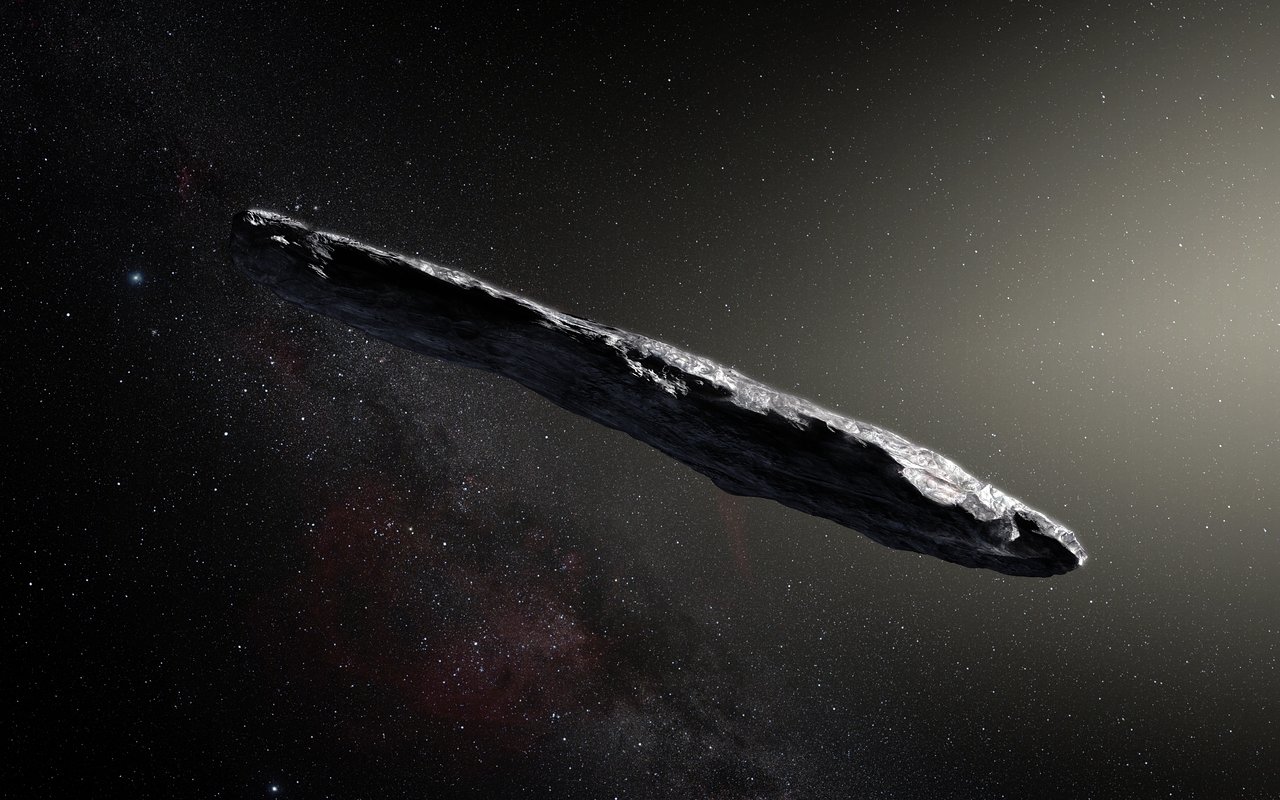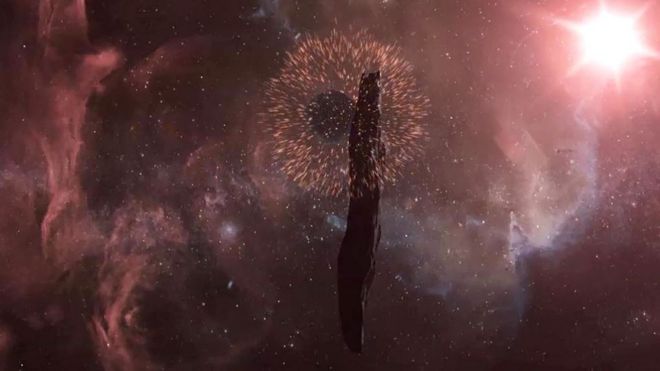ESO Science Release | VLT | FORS | 2017 Nov 20
VLT reveals dark, reddish and highly-elongated object
For the first time ever astronomers have studied an asteroid that has entered the Solar System from interstellar space. Observations from ESO’s Very Large Telescope in Chile and other observatories around the world show that this unique object was traveling through space for millions of years before its chance encounter with our star system. It appears to be a dark, reddish, highly-elongated rocky or high-metal-content object. The new results appear in the journal Nature on 20 November 2017.
On 19 October 2017, the Pan-STARRS 1 telescope in Hawai`i picked up a faint point of light moving across the sky. It initially looked like a typical fast-moving small asteroid, but additional observations over the next couple of days allowed its orbit to be computed fairly accurately. The orbit calculations revealed beyond any doubt that this body did not originate from inside the Solar System, like all other asteroids or comets ever observed, but instead had come from interstellar space. Although originally classified as a comet, observations from ESO and elsewhere revealed no signs of cometary activity after it passed closest to the Sun in September 2017. The object was reclassified as an interstellar asteroid and named 1I/2017 U1 (`Oumuamua) [1]. ...
ESO’s Very Large Telescope was immediately called into action to measure the object’s orbit, brightness and colour more accurately than smaller telescopes could achieve. Speed was vital as `Oumuamua was rapidly fading as it headed away from the Sun and past the Earth’s orbit, on its way out of the Solar System. There were more surprises to come.
Combining the images from the FORS instrument on the VLT using four different filters with those of other large telescopes, the team of astronomers led by Karen Meech (Institute for Astronomy, Hawai`i, USA) found that `Oumuamua varies dramatically in brightness by a factor of ten as it spins on its axis every 7.3 hours. ...
First Known Interstellar Visitor is an “Oddball”
Gemini Observatory | 2017 Nov 20
Gemini Observatory provided key observations in characterizing an object visiting from outside our solar system, ‘Oumuamua. After the object was discovered by Pan-STARRS1 on Haleakala, both Gemini telescopes dropped everything to observe ‘Oumuamua for three nights as it quickly dimmed from view. Researchers found that despite its interstellar origin, the object is similar in composition to some objects in our Solar System but its shape is unlike anything found around our Sun. ...
Earth's First Known Interstellar Visitor Unmasked
Institute for Astronomy | University of Hawaii | 2017 Nov 20
Discovery and Characterization of the First Known Interstellar Object - Karen J. Meech et al, Nature, Nov 2017


